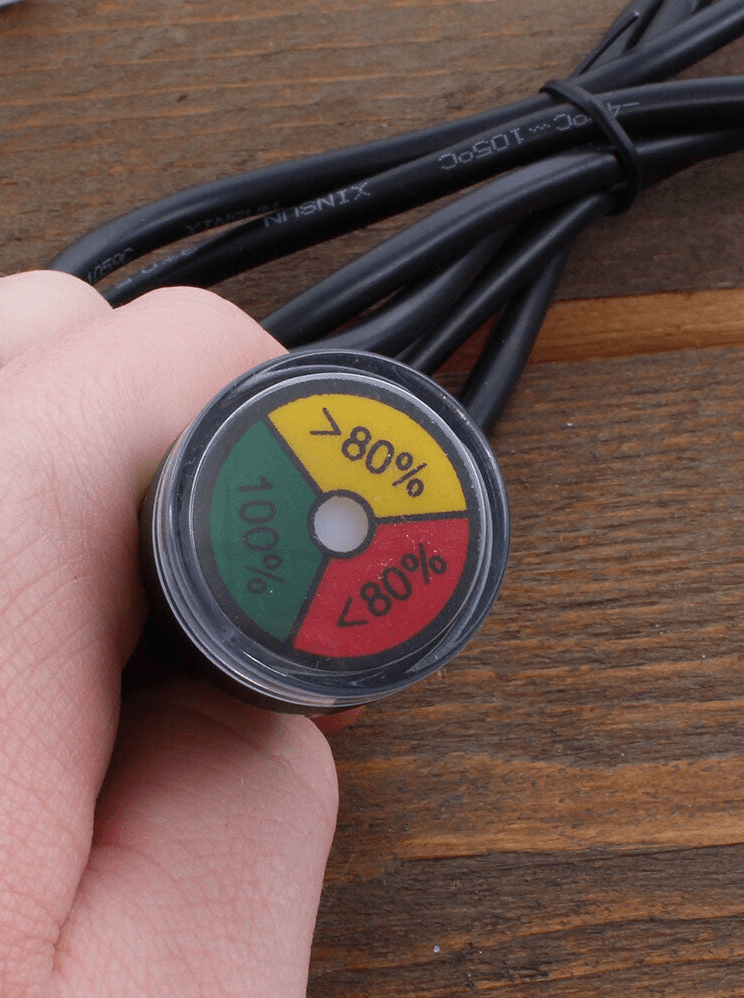1
/
of
16
AGM 1 to 8 kWh net batteries 12/24/48V including charger, display and cables
AGM 1 to 8 kWh net batteries 12/24/48V including charger, display and cables
Regular price
€495,00
Regular price
Sale price
€495,00
Taxes included.
Shipping calculated at checkout.
Quantity
Couldn't load pickup availability
- WE CURRENTLY OFFER THE BETTER LIFEPO4 BATTERIES AT THE SAME PRICE!
- 1 kWh (1 battery) net!, 2 kWh capacity (2 batteries) or 4 kWh (4 batteries) or 8 kWh (8 batteries). An average sloop up to 7 meters consumes up to 1 kWh at speeds of up to 7 kilometers per hour. Many people sail up to 30 kilometers per day, and for that, 4 kWh is sufficient.
- can be used for 12 volt, 24 volt and 48 volt motors
- From the top brand GreenCell.
- Semi-traction VRLA AGM lead-acid batteries.
-
Valve Regulated Lead Acid (VRLA) technology: a lead-acid battery regulated by an invisible pressure relief valve. Gas will only escape through a safety valve if the battery is incorrectly charged and/or if the cells fail.
A maintenance-free Battery and utilizes advanced Absorbent Glass Mat (AGM) technology. This technology ensures that the battery acid is absorbed into the fiberglass mats and no longer floats freely within the battery. This prevents sloshing, leaks, and the formation of oxyhydrogen. - So it can be used without any problems in normally ventilated areas. The battery is therefore safer and can be used in almost any position (except upside down) to be mounted .
- The Absorbent Glass Mat also improves the battery's lifespan during deep discharge because the plates cannot warp. This makes an AGM battery good suitable for deep discharge / deep cycle (up to 80%) and cyclic use. AGM batteries for cyclic use are specially designed for multiple intensive discharges and recharges. This makes these AGM batteries ideal for applications such as maintenance batteries, service batteries, solar panel batteries, boat batteries, caravan batteries, camper batteries, and mobility scooter batteries.
- The AGM battery can deliver a very high current for a short period and also provide power for a long time. This makes it ideal for starting engines and also for applications such as electric winches and bow thrusters. Compared to gel batteries, AGM batteries are more suitable for delivering high current for short periods.
- The indicated capacity is based on a discharge time of 10 hours. If you discharge the battery in 5 hours, the capacity decreases by approximately 15%; see the table below for Constant Power Discharge Characteristics.
- In terms of lifespan, you can discharge the battery up to 400 times, which is more than sufficient for average boating. And that's even with all discharges down to 80%! Discharge the battery down to 50%, and you can discharge it up to 800 times. Discharge it down to 30%, and you can discharge it a whopping 1,500 times.
With a float voltage, an AGM battery will still have 80% of its original capacity after 6 years at an average ambient temperature of 25 ºC.
A lifepo4 lithium battery lasts 8 times longer: after 3000 cycles at 80% discharge, it remains at 80% capacity.
-
Operating and storage temperature: -20°C to 60°C. At an ambient temperature of 20 degrees Celsius, an AGM battery performs best. For example, AGM batteries retain 40% capacity at -20°C. Not only cold temperatures negatively impact the lifespan of an AGM battery, but also very high temperatures. According to design standards, a Long Life AGM battery has a functional lifespan of 10 years at an ambient temperature of 20°C. At a temperature of 30°C, this will be 4 years, and at 40°C, 2 years. It is optimal to use batteries in temperature-controlled areas to ensure optimal performance.
- doesn't leak
- can be mounted tilted.
- very suitable for cyclic use.
- 30% longer life than a standard lead-acid battery.
- suitable for industrial applications and in boats and campers with high energy consumption.
- maximum discharge current 1,000 Ampere for 5 seconds
- maximum recommended charging current 31 Ampere (30% of battery capacity) per battery.
- minimum recommended charging current 10% to 25% of battery capacity.
- Only 1.5% self-discharge per month at a temperature of 10°C. This discharge rate doubles with every 10°C increase in temperature, resulting in 3% self-discharge per month at a temperature of 20°C.
- with handles for easy placement and transport
- with Terminal B5 (M6 bolt) connections
- Dimensions per individual battery:
- 330 × 171 × 224 mm
- Including battery charger
- Maintain the batteries with a trickle charge voltage of approximately 13.2 Volts (at 12 Volts and 26.4 Volts at 24 Volts and 52.8 Volts at 48 Volts) and a periodic refresher charge (source: Victron, Electricity on Board). With float voltage, an AGM battery will still have 80% of its original capacity after 6 years at an average ambient temperature of 25 ºC.
- The maximum charging voltage of the batteries is 14.6 Volt to 14.8 Volt in cycle use at 12 Volt (13.6 Volt to 13.8 Volt in float use).
- The maximum charging voltage of the batteries is 14.6 Volt to 14.8 Volt in cycle use at 12 Volt (13.6 Volt to 13.8 Volt in float use).
- including cables
-
A Lithium lifepo4 battery is a premium alternative
- Two to three times lighter. Keep in mind that ordering 8 kWh of AGM will add an additional 240 kilograms to the boat's weight. The ePropulsion E175 LiFePO4 Battery 9 kWh 48V is much lighter at 87 kilograms.
- smaller than an AGM battery.
- the lifespan is also 3 times as long.
- The lifepo4 battery does not need to be continuously connected to the battery charger.
- A Lithium lifepo4 battery cannot be damaged by deep discharge and can be fully discharged.
- The price is 2 to 3 times as high.
Share

































